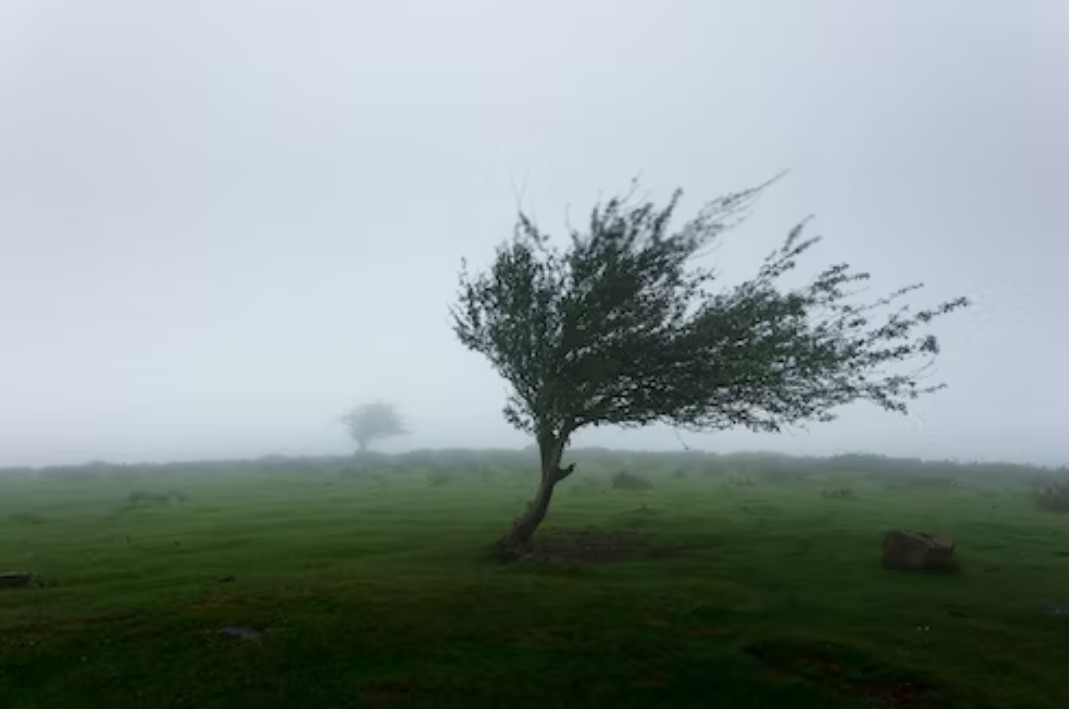e..H. In ‘The Storm-Wind’, Barnes describes a dramatic storm which leads the speaker to feel a sense of awe and wonder at the absolute power of nature.
This page includes a breakdown of the stanzas, an insight into the speaker + voice of the poem, and an exploration of the themes and deeper meanings. It’s only a quick overview to help you get to grips with the poem; you can access a full in-depth breakdown of the poem on the links below.
VOCABULARY
- Brook – a small stream
- Alders – toothed-leaved trees or shrubs of the birch family
- Lowly – low in status or importance; humble
- O’er – poetic contraction of ‘over’
- Quivering – trembling or shaking motion
- Writhes – make twisting, squirming movements of the body
- Segde-reeds – a plant similar to grass that grows in wet ground and on the edge of rivers
- Reel – lose one’s balance and stager or lurch violently
- Wavelings – to take the first step in cold water at the water’s edge
- Lee – the sheltered side of something; the side away from the wind
- Nook – a corner offering seclusion or security
- Ivy – a woody climbing plant typically having dark, shiny-five pointed leaves
- Nigh – located a short distance away
STORY/SUMMARY
The speaker of the poem describes a storm and how it can feel amongst different circumstances. The first stanza describes its chaotic nature and how it affects different components of nature, such as brooks, trees, leaves and weeds. Here we feel the essence of the storm outside the environment. As the story progresses, we see how the speaker uses characteristics to describe how one would physically manage what can often be, the harshness of both storm and wind. There is a parallel between nature surviving the wind storm. In the last stanza, the speaker quietens the storm and almost dispels it, as he describes the storm not being able to penetrate his house.
We are invited into the warm and calmness of his dwelling, where the storm is not able to reach him. There is a juxtaposition created between inside and outside, the home and the outside world, and sound against quietness. The speaker makes this comparison in the last line of the poem. He speaks of hearing the delicate, faint noise of a baby’s sigh in his protected home, against the loud, thrashing storm we hear at the beginning. The story’s atmosphere at the start is one that feels aggravated and destructive, to an atmosphere that feels safe and secure. Our reader’s response may invite one of understanding and reliability, of being stuck in the crux of a storm (both literal and figurative) to coming home and feeling great relief on our return.
SPEAKER/VOICE
A speaker is a rural man who describes his observations of a storm, from his own experience growing up in Dorset. He uses pathos to show what one’s experience in a storm can be like, as well as playfulness in his descriptive language, noticeably in his use of personification. In the detail he conveys, the speaker invites us to view nature in a myriad of ways; in awe, fear, appreciation and fondness.
Thanks for reading! You can buy our detailed study guide here if you’re studying this particular poem.
This includes:
- Vocabulary
- Story + Summary
- Speaker + Voice
- Language Feature Analysis
- Form and Structure Analysis
- Context
- Attitudes + Messages
- Themes + Deeper Ideas
- Key Quotations
- Extra tasks / possible essay questions














